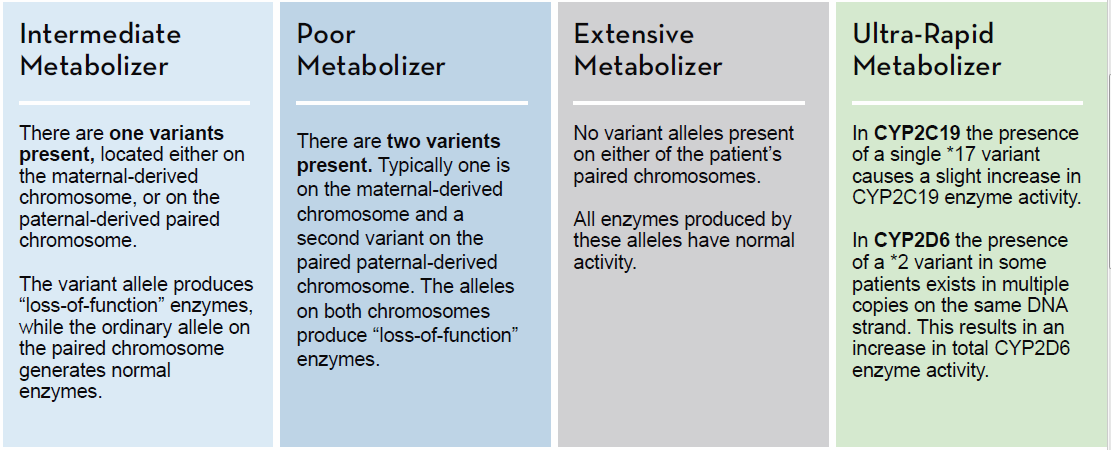Virtually every pathway of drug metabolism, transport, and action is influenced by genetic variation. One of several important gene families responsible includes the cytochrome P450 (CYP) genes. This group encodes enzymes expressed in the liver and mucosal surface of the intestinal tract that play important roles in biosynthesis and metabolism of endogenous compounds, chemicals, toxins, and medications. For example, the liver enzyme cytochrome P450 (CYP450) CYP2D6 gene is highly polymorphic, with over 74 known alleles and allelic frequencies varying greatly between ethnic groups.
Depending on the combination of alleles in an individual, drug-metabolizing phenotypes associated with the CYP2D6 enzyme can vary. Alleles are classified into functional groups: full (normal), reduced, or no function that determine 4 majorpredicted phenotypes:
A poor metabolizer (PM) has 2 ‘no function’ alleles leading to limited or loss of activity, an intermediate metabolizer (IM)has 1 ‘normal (wild-type)’ and 1 ‘reduced’ allele or 2 ‘partially reduced’ alleles, a normal (extensive) metabolizer (EM) has 2 ‘normal’ alleles, and the ultra-rapid metabolizer (UM) has excess activity due to duplicate functional alleles.
